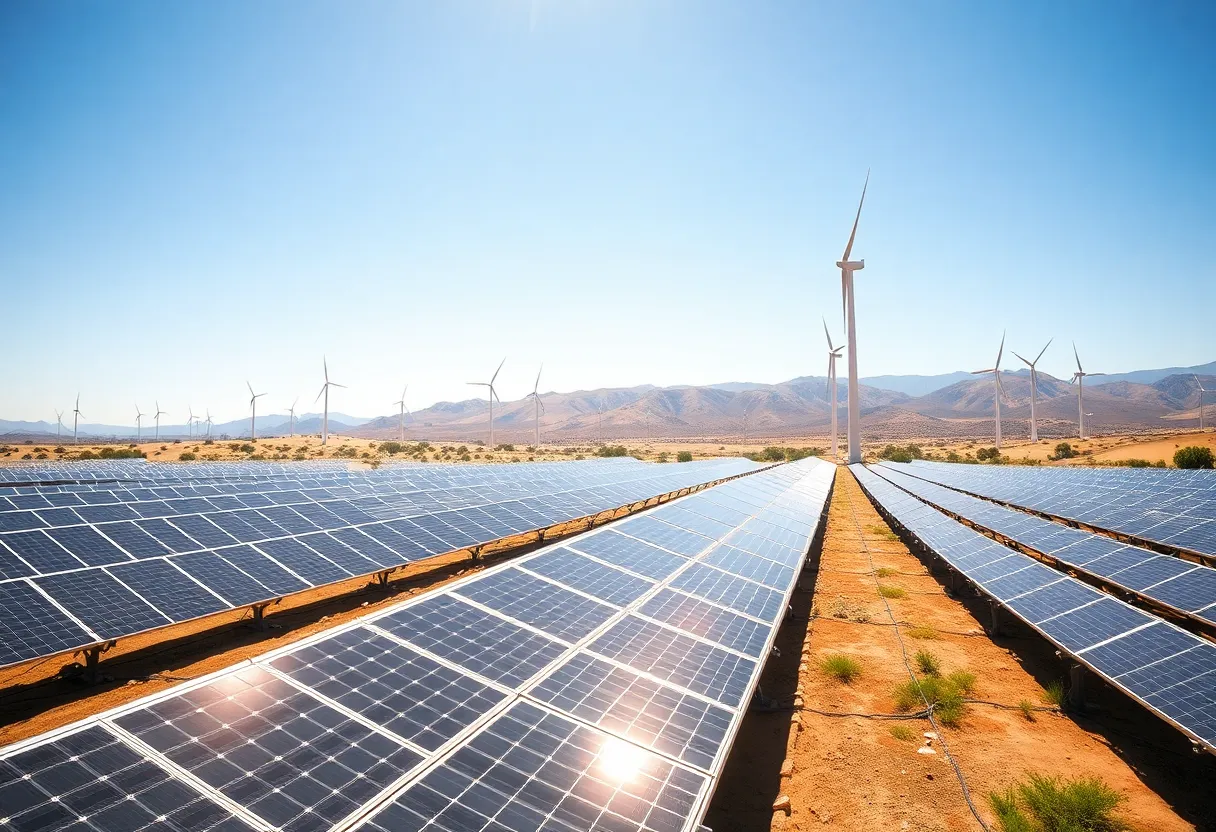News Summary
California’s significant underutilized thermal capacity represents a major opportunity to expand renewable energy generation. Currently operating at a mere 15% capacity factor, the state’s 16 gigawatts of thermal facilities could be upgraded. A report from Berkeley suggests the potential for an additional 76 gigawatts of clean energy, focusing on solar and wind, to alleviate energy shortages and environmental concerns while addressing rising electricity rates, especially as demand from sectors like AI and data centers increases.
California is home to a significant amount of underutilized thermal capacity, presenting a substantial opportunity for expanding renewable energy generation. The state currently operates approximately 16 gigawatts (GW) of thermal capacity, predominantly gas-powered, which is functioning below a 15% capacity factor. This underperformance highlights a potential for improvement that can address both energy shortages and environmental goals.
A recent report from Berkeley identified the opportunity for an additional 53 GW of clean energy capacity, inclusive of wind and solar, alongside 23 GW of energy storage due to surplus interconnection availability. By fully leveraging these resources, California could potentially add 76 GW of clean energy to its existing infrastructure, nearly doubling its installed generation capacity, which is forecasted to be 89 GW by 2024.
Current Thermal Capacity and Its Utilization
The findings indicate that many existing renewable and fossil fuel generators fail to maximize their interconnections. Gas-powered peaker plants have been particularly identified as underperforming, operating at less than 15% capacity. This inefficiency represents a significant opportunity for improvement, especially if solar and wind energy sources are strategically developed near these idle gas plants.
Interconnection Landscape
The California Independent System Operator (CAISO) currently manages a total of 230 GW of resources in its interconnection queue; however, only about 60 GW have been granted deliverability. Additionally, while CAISO acknowledges the existence of a surplus interconnection pathway, it also reports a lack of interest from developers to act on these opportunities. This situation presents a challenge to the state’s ambitious renewable energy goals.
Impacts on Electricity Rates and Demand
As California navigates its energy landscape, it faces rising electricity rates. The average price, currently 30.22 cents per kilowatt-hour, is the highest in the continental United States. Several factors, including the push for aggressive green energy policies, have been attributed to the escalating costs, resulting in unequal economic impacts, particularly on lower-income residents.
Looking ahead, electricity demand in California is expected to surge, particularly due to the growth of sectors such as artificial intelligence and data centers. This increase poses additional strains on the state’s already stressed energy resources, triggering debates regarding the optimal balance between renewable and fossil fuel sources in California’s energy strategy.
Future Renewable Energy Strategy
The Berkeley report’s findings have sparked dialogue among experts in the energy field. While some consider the proposals creative and viable, caution remains regarding straightforward comparisons of gas plants and renewables based solely on costs. Experts emphasize the theoretical credibility of the report, recognizing opportunities to enhance wind, solar, and energy storage capabilities at current sites.
In conclusion, California is positioned at a crossroads in its quest for sustainable energy solutions. The underutilization of thermal capacity combined with the potential for expanded renewable sources underscores a pivotal opportunity for the state to bolster its energy generation capabilities while navigating the complexities of rising electricity costs and increasing demand.
Deeper Dive: News & Info About This Topic
- Utility Dive: California Could Nearly Double Generation Capacity
- Los Angeles Times: California’s Renewable Energy Future
- PV Magazine: Solar Power Curtailment Rises in California
- EnergySage: California Solar Electricity Generation Up 33 Percent
- New Geography: The High Cost of California’s Green Energy Policies
- Wikipedia: California Energy
- Google Search: California Renewable Energy
- Google Scholar: California Renewable Energy Policies
- Encyclopedia Britannica: California
- Google News: California Energy News

Author: STAFF HERE HOLLYWOOD
The Hollywood Staff Writer represents the experienced team at HEREHollywood.com, your go-to source for actionable local news and information in Hollywood, Los Angeles County, and beyond. Specializing in "news you can use," we cover essential topics like product reviews for personal and business needs, local business directories, politics, real estate trends, neighborhood insights, and state news affecting the area—with deep expertise drawn from years of dedicated reporting and strong community input, including local press releases and business updates. We deliver top reporting on high-value events such as the Hollywood Bowl summer concerts, the Hollywood Christmas Parade, film premieres at TCL Chinese Theatre, and festivals at the Magic Castle. Our coverage extends to key organizations like the Hollywood Chamber of Commerce and Visit Hollywood, plus leading businesses in entertainment, dining, and tourism that define the local economy. As part of the broader HERE network, including HERELosAngeles.com, HEREBeverlyHills.com, HEREAnaheim.com, and HEREHuntingtonBeach.com, we provide comprehensive, credible insights into Southern California's dynamic landscape.





